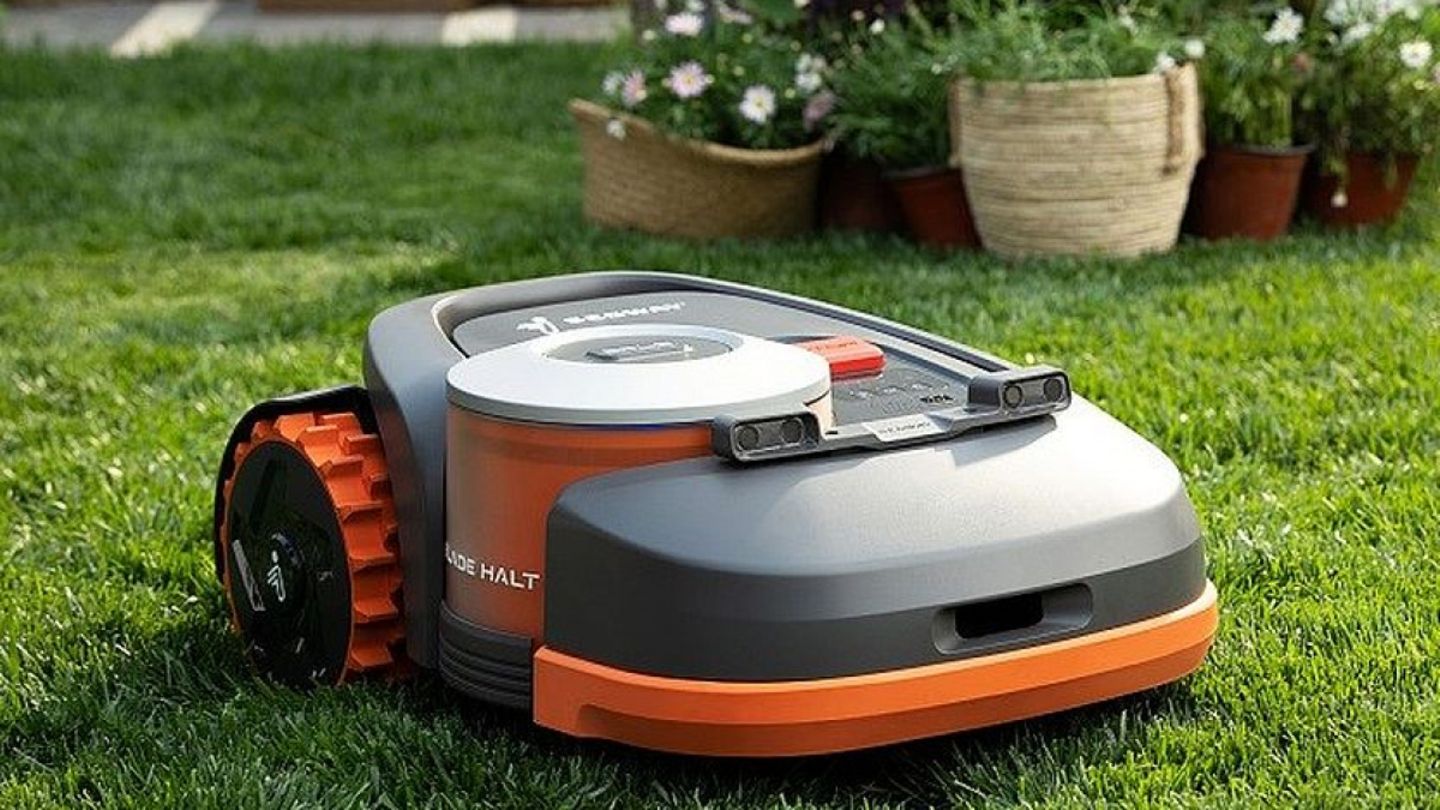In 2021, the robotic lawnmowers want to finally get rid of the annoying limitation data. Segway-Ninebots Navimow combines sensors with GPS data and aims to achieve an accuracy of two centimeters.
Robotic lawnmowers have been around for years, but they are not gaining ground as quickly as their indoor relatives, the vacuum cleaner robots. They are comparatively expensive and quite stupid at the same time. In order to find your way around, you usually have to lay a boundary wire around the lawn to be mowed. Only this wire signals to the machine: Until here and no further. This only works as long as the wire is live.
If you only want to have a simple rectangular or round lawn mowed, this is not a big problem, if you disregard the one-off laying of the wire. But when, as soon as there are flower beds as an island on the lawn, things get complicated. Even if several separate areas are to be plowed.
So far, the wire has been the safest
There are also devices that try to optically recognize the end of the lawn. So far, however, this has not really worked satisfactorily. This year, the navigation of the robots is to be significantly improved. The Segway-Ninebot Navimow relies on GPS information. With his Extra Fusion Locating System he combines the satellite data with the information from his sensors. Segway Ninebot says the system is accurate to within two centimeters. After Worx, Segway-Ninebot is the second major Chinese manufacturer to officially offer robotic lawn mowers in Europe.
Robotic lawn mowers have to work much more error-free than robotic vacuum cleaners. If the vacuum cleaner loses its orientation, it will stay somewhere in the apartment when the battery is empty. A robotic lawnmower, on the other hand, can dash off somewhere else and cause damage there. This is a dangerous situation because of the mower. In addition, the edge of the lawn is mowed precisely. Nobody wants to rework an edge with the edge cutter that the robot overlooks. The setup of the Navimow works like you know it from vacuum robots. The mower is operated with an app on which the boundaries of the mowing zones are entered. For further security, the system triggers an alarm if the robot exceeds its limits.
More models at the start
The mower is also equipped with five sensors that enable it to detect and avoid obstacles. The hub motors allow him to climb inclines of 45 percent. The Navimow is delivered with several battery sizes. The top model with a 10.4 Ah battery should be able to cover 3000 square meters in one go, but also costs 2500 euros. The entry-level model H500E has a 5.2 Ah battery and is supposed to mow 500 square meters, here the price is 1199 euros.
The Belgian-American start-up Toadi will also launch the robotic lawnmower in the summer. This robot captures the garden with a 4k camera and is supposed to find its way around with the help of image recognition. In addition, the Toadi can also be used as a guard robot, then he goes on patrol at night on the property.
The Terra from iRobot uses yet another system. iRobot is considered to be the leader in vacuum robots. The machines use optical recognition for navigation and not a lidar system. This is how the garden robot should orient itself, but small electronic lighthouses, beacons, are also used. Like a beacon, they give the robot fixed orientation marks. After the start of the Terra was postponed due to the corona pandemic, it is scheduled to come onto the market this season.
Unfortunately, the new wireless systems have one thing in common: They are even more expensive than previous robots that work with a perimeter wire.
David William is a talented author who has made a name for himself in the world of writing. He is a professional author who writes on a wide range of topics, from general interest to opinion news. David is currently working as a writer at 24 hours worlds where he brings his unique perspective and in-depth research to his articles, making them both informative and engaging.




